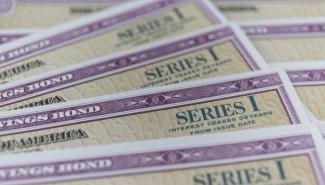
I-Bonds: Do They Fit in Your Portfolio?
Most investors consider their portfolio’s fixed income allocation as the safety net that can dampen equity volatility. In this current interest rate environment, finding fixed income investment options have become somewhat difficult. One is forced to choose between a safe fixed income investment with little to no interest or explore the high-yield fixed income space where the principal may not be as safe.
To make matters more complicated, recent inflation has been eating away at returns of fixed income investments. While the primary focus for all investors should be long-term returns, there may be a short-term investment opportunity that can address both low interest rates and high inflation: I-Bonds.
What are I-Bonds?
I Bonds are a type savings bonds issued by the US Treasury. Their interest rate is a combination of a fixed rate that stays the same for the bond’s life and a floating rate based on inflation which is adjusted twice per year on May 1st and November 1st. I-Bonds earn interest monthly and are compounded semiannually for 30 years or until you redeem them first (whichever comes first), albeit with some redemption penalty. Below is a helpful chart illustrating the penalty rules:
Why are they attractive now?
For example, if one were to purchase an I-Bond in December, they would earn a fixed rate of 0% (this is fixed for the life of the bond) and an inflation-adjusted rate floating rate of 7.12%. This was the rate announced on November 1st and will apply to all I-Bonds.
In comparison to many other safe fixed income options that offer rates of 0.50%-1.50%, I-Bonds seem like a pretty good option. On top of this, I-Bond are backed by the US Government, making them one of the safest fixed income options available.
Drawbacks of an I-Bond
As with all investments, there are caveats to be aware of:
- Illiquidity: As the chart above shows, if you were to purchase an I-Bond, you are unable to redeem it for a one-year period after its purchase.
- Inflation Rate Adjustments: While a 7.12% rate is extremely attractive, after May 1st when the Treasury makes the adjustment to the Bond’s inflation rate, you may no longer have this 7.12% available to you. This may be the largest drawback as predicting inflation six months in advance is an unknown factor.
- Purchase Limits: The Treasury Direct website has placed a $10,000 purchase limit per calendar year per individual. That said, there are some ways to maximize the purchase limit (more on this below).
Are I-Bonds right for you?
Now that we have covered the general basics, the first big thing to consider is the lack of liquidity for one year. Can you tie up $10,000 for one year? Do you have enough other cash on the sidelines for your emergency fund? If you can answer yes to these questions, then read on.
The next step would be how best to maximize the $10,000 purchase limit. Keep in mind this limit is each calendar year so you could purchase $10,000 in December and another $10,000 in January and still lock in the 7.12% rate. Even though the inflation adjustment would take place on May 1st, you would still have the 7.12% locked in for 6 months. For example, if you purchased I-Bonds in December, the new inflation adjustment rate would not be effective until June 1st, or if you purchased I-Bonds in January, the inflation rate would not be effective until July 1st.
Married couples have the benefit of purchasing $10,000 each, which would mean $40,000 of I-Bonds between December and January. (Again, do you have enough liquidity to have $40,000 locked up for whole year?) It should also be noted that the $10,000 limit only refers to electronic purchases through the Treasury Direct website.
Up to $5,000 of I-Bonds can be purchased in paper form via income tax refunds by filing Form 8888. This of course does mean that you would need have a refund of $5,000 (or $10,000 for those married filing jointly) to take full advantage. While it may be unfavorable to have paper bonds in the event of misplacing them or a fire, the Treasury Direct website does offer an option to convert them to electronic bonds.
In essence, a married couple could purchase up to $50,000 of I-Bonds and lock in this 7.12% rate ($20,000 in December, $20,000 in January, $10,000 via Income Tax Refund purchase).
What about taxes on I-Bonds? Like any savings bond, you can have the interest on these bonds deferred until redemption. (You could report the interest each year if you choose.) Also, as with any federal savings bond, there are no state income taxes on the interest.
Finally, each individual needs to establish their own account with the Treasury Direct website. This means that for married couples, both spouses will need to establish an account and link their account to the bank they are using to fund the purchase of the bonds. (Though the process is straightforward thankfully.)
Conclusion
Depending on your situation, taking advantage of the current I-Bonds rate could result in a very favorable short-term rate of return. One should review their goals and consult with a fee-only financial advisor to see if this strategy makes sense for you.
Weingarten Associates is an independent, fee-only Registered Investment Advisor in Lawrenceville, New Jersey serving Princeton, NJ as well as the Greater Mercer County/Bucks County region. We make a difference in the lives of our clients by providing them with exceptional financial planning, investment management, and tax advice.

